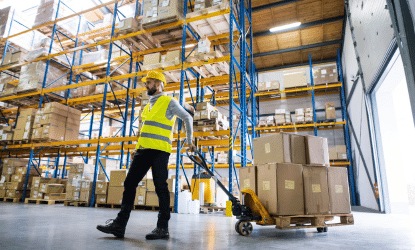Reverse logistics: our management of product returns
Logistics
Supply Chain
June 10, 2024

What is reverse logistics?
Reverse logistics, or reverse logistics, is a management process that focuses on returning products from the consumer to the manufacturer or distributor. Unlike traditional logistics, which focuses on getting products from manufacturer to consumer, reverse logistics deals with the management of returned products for various reasons such as customer returns, defective products, recycling or reuse of materials.
Why is reverse logistics important?
- Customer Satisfaction: The ability to easily return products increases customer satisfaction and loyalty.
- Sustainability: It allows for the recycling and reuse of products and materials, thus contributing to more environmentally friendly practices .
- Cost Reduction: By recovering and reusing products or components, businesses can reduce their production and supply costs.
- Regulatory compliance: Many industries must comply with strict regulations regarding the treatment of end-of-life products.
A module for managing product returns
A technological module within our EGO WMS was jointly developed with a French specialist in outsourced returns solutions for marketplaces. The goal is to more efficiently interface the flow of information between online retailers and their warehouses.
The challenges of interfacing between WMS and CMS
Our partner had observed the significant challenge of connecting two often opposing IT worlds: WMS) for warehouses and Content Management Systems (CMS) for marketplaces . With the explosive growth of e-commerce , managing product returns has become a major headache for many online retailers. Our EGO WMS already offered reverse logistics functionalities to streamline returns: receiving, inspection, and warehousing. Until now, these functionalities were activated through an interface with an ERP system.
The goal is to more effectively interface the flow of information between online retailers and their warehouses.
New innovation
The novelty here was to interface this existing brick in EGO with our partner's returns management Thanks to this module, gains are measured on:
- The time taken to put a customer return into stock (and therefore a discount on the market for e-commerce sites),
- The reduction in the shrinkage rate due to obsolescence of articles,
- A reduction in reception operations associated with a gain in reception storage areas (linked to a reduction in outstandings).
This hybrid module is being installed at a major e-commerce player in France. This returns management will be ensured by a new logistics service provider chosen by our partner, responsible for control and restocking operations.
Outlook: Beyond this first success, this collaboration with our partner aims to offer this universal “plug & play” module, a sort of IT Swiss army knife, to web merchants and logistics providers working for them.
Most read articles
WMS software
Logistics
Supply Chain
November 7, 2025
Go beyond the ABC method: How a WMS refines your inventory management strategy?
In logistics, the ABC method is a classic. But here's the hard truth: in the age of e-commerce, relying solely on a static ABC analysis is like trying to win a Formula 1 race without the right car. The problem isn't the method itself, but treating it as an immutable truth set in stone once a year.
WMS software
Logistics
Supply Chain
October 31, 2025
Packaging optimization: How does your WMS save you money on transported "empty space"?
Empty space represents, on average, 57% of the volume of packages shipped in e-commerce. It's not just wasted space; it's money gone up in smoke. In this article, we'll analyze how a WMS platform can become the ultimate weapon against empty space.
WMS software
Logistics
Supply Chain
July 3, 2024
Inventory management using WMS software
To master your inventory management, it is imperative to use suitable and efficient inventory management software. With this automation, you can monitor the status of your inventory in real time, allowing you to make informed and rapid decisions to avoid stock-outs or overstocks.

















